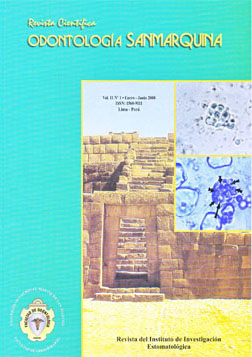Non-surgical treatment alternatives of mandibular fractures in pediatric patients
DOI:
https://doi.org/10.15381/os.v11i1.3083Keywords:
mandibular Fracture, trauma, childhood.Abstract
Facial traumas in pediatric patients show considerations that are not present in adults, related to prevalence, diagnosis and treatment. Facial fractures prevalence in children is low, ranging from 13 to 15%. This can be due to anatomic or environmental factors, such as traffic accidents, falls and sport accidents as the main ones. The choice of treatment alternative will depend on the intrinsic characteristics of the fracture, the patient’s age and teeth development stage. Thus heterogeneity along with low incidence of facial fracture in pediatric patients, and limited experience of some clinical and surgical professionals in child trauma management can be support for lack of consensus in treatment. Generally, minor age of patient have more conservative management. Fractures with minimum displacement can be treated in a conservative way, by means of máxilo mandibular fixation, observation, soft diet and rest or analgesic medication when necessary. The open reduction with rigid internal fixation should be performed only in cases of moderate to severe bone displacement.Downloads
Downloads
Published
Issue
Section
License
Copyright (c) 2008 José Muñante-Cárdenas, Sergio Olate, Miguel Jaimes, Erick Gonzales del Castillo, José Ricardo de Albergaria- Barbosa

This work is licensed under a Creative Commons Attribution-NonCommercial-ShareAlike 4.0 International License.
AUTHORS RETAIN THEIR RIGHTS:
a. Authors retain their trade mark rights and patent, and also on any process or procedure described in the article.
b. Authors retain their right to share, copy, distribute, perform and publicly communicate their article (eg, to place their article in an institutional repository or publish it in a book), with an acknowledgment of its initial publication in the Odontología Sanmarquina.
c. Authors retain theirs right to make a subsequent publication of their work, to use the article or any part thereof (eg a compilation of his papers, lecture notes, thesis, or a book), always indicating the source of publication (the originator of the work, journal, volume, number and date).






